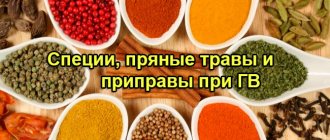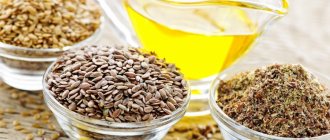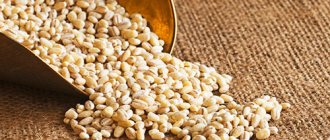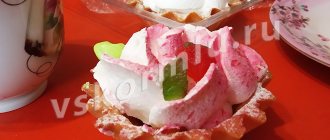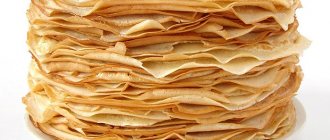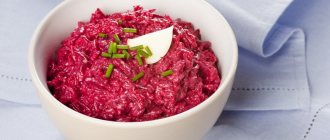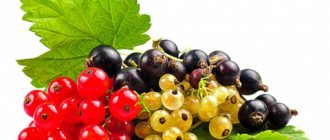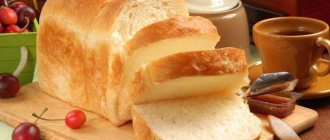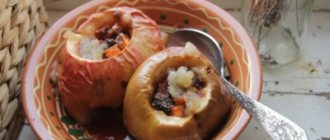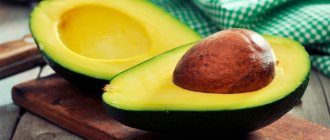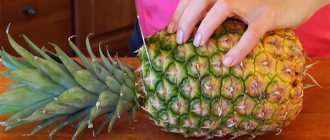Baking, which is a favorite for many, must be treated with caution during lactation, since not every type of baking is safe for the health of the baby.
What a pie should be like for a nursing mother and how to prepare it correctly, what ingredients will not harm the baby - we’ll try to figure it out in this article. After all, all these questions haunt new mothers who try to eat not only tasty, but also healthy, which, of course, deserves respect and praise.
Sweet baked goods while breastfeeding
Homemade desserts are easy to make hypoallergenic and safe. When cooking at home, the housewife has complete control over the process: the composition of the dish, the combination and quantity of ingredients, and the method of preparation. Cupcakes, charlottes, casseroles, pies, pizzas will add flavor variety to the menu of a nursing woman.
Video: charlotte recipe for a nursing mother
The inclusion of baked goods in the menu of a nursing woman is justified. A nursing mother has no reason to strictly limit herself. The main thing is to eat homemade baked goods, prepared according to the correct recipes and in reasonable quantities.
For some young mothers, the very thought that baking in any form is prohibited while breastfeeding is terrible, and they will have to endure several months before they can treat themselves to a delicious dessert. In fact, everything is not so simple. If you approach the process correctly and choose suitable recipes, you can diversify your usual diet and not harm your baby. Of course, preference is given to simple dishes made from natural ingredients.
For breastfeeding women, aromatic charlotte, delicate casserole, crumbly cookies or fruit cake are available. At the same time, they should not forget that in large quantities flour can negatively affect not only the baby’s condition, but also his figure.
What benefits can buns bring while breastfeeding?
As you have seen, buns, if consumed in excess, can cause significant harm to the health of a nursing mother and her baby, but pediatricians still do not classify such products as prohibited.
The fact is that, despite the abundance of harmful properties, buns also have some useful qualities.
- Due to the fact that the dough consists almost entirely of fast carbohydrates, the buns quickly fill you up. Breastfeeding moms usually have very little time for snacking, so these foods can be very convenient.
- Although buns contain very few useful substances, they still exist. So, depending on the composition, you can find calcium, iron and magnesium in the rolls. All these microelements are extremely important for a nursing mother and a growing child’s body, as they contribute to faster recovery and development.
- Sweets help women fight postpartum depression and stress because they activate the production of the joy hormone. Since the buns contain sweet ingredients, they also have similar properties.
When preparing buns, various ingredients are used, which also have their own beneficial properties. For example, a bun with cottage cheese contains a significant amount of calcium and helps strengthen bones.
Recipe for yeast-free kefir dough for a nursing mother
The recipe does not include the addition of eggs, which makes the dough almost ideal for breastfeeding.
Test composition:
- Kefir 2.5% fat - 250 ml.
- Wheat flour - about 500 grams.
- Baking soda 2/3 teaspoon.
- Salt to taste.
- Sugar to taste.
Preparation:
- Add sugar and salt to slightly warmed kefir, then add sifted flour in small portions, kneading the dough without lumps.
- Add flour little by little to make the dough soft and not hard. Sometimes you need a little more, sometimes a little less flour. The amount depends on its humidity. The soda is divided into three equal parts.
- The dough is rolled out into a flat cake up to 1 cm thick and sprinkled evenly with some baking soda, kneaded and rolled into a flat cake again.
- The same steps are repeated two more times.
- Place the finished dough in a warm place for 30–40 minutes.
Kefir dough is soft and airy; it makes excellent quality pies and a base for pizza.
Pizza recipe on this test
The secret of pizza for a nursing mother is simple: yeast-free dough and filling from products that are well tolerated by the baby. It is impossible to imagine pizza without tomato sauce. Since it is not recommended to use ready-made factory sauces during breastfeeding, you will have to make your own at home. The general principle of making tomato sauces is simple:
- fresh tomatoes are scalded with boiling water and the skin is removed;
- vegetables are chopped and placed in a frying pan or saucepan;
- then simmer over medium heat for 5–7 minutes.
You can add to the sauce whatever the mother wants and what the child “allows” her: herbs, olive oil, seasonings.
Video: quick pizza for nursing mothers
Read further:
Diet for nursing mothers for weight loss - menu by day while breastfeeding
Salads for nursing mothers - 10 recipes with photos (for breastfeeding)
Can a nursing mother have pea soup while breastfeeding? (video)
Breastfeeding pads - reusable pads for nursing mothers
Vitamins for nursing mothers - which ones are better: list for lactation (Komarovsky)
Weekly menu for a nursing mother from 0 to 3 months with recipes (breakfast, lunch, dinner)
Can a nursing mother bake?
There is an opinion among women that baking during breastfeeding is strictly prohibited. Actually this is not true. If you use the right recipes and approach the matter with imagination, then it is quite possible to diversify the diet of a young mother with the help of tasty and healthy baked goods. How to choose the right recipes and ingredients? Which baked goods are harmful while breastfeeding, and which can be eaten without danger?
Baking for nursing mothers: debunking myths
There are still many myths surrounding nutrition during breastfeeding, which prevent a nursing woman from eating fully and enjoying motherhood due to constant restrictions. This also applies to baking.
Sugar, butter and eggs, mandatory attributes of any baked goods, are unacceptable during breastfeeding.
In fact, you can eat all of these foods while breastfeeding. The main thing is to make sure that the baby tolerates them well. The main danger lies in chicken eggs, since the protein is a strong allergen.
But even if the baby has a negative reaction, a chicken egg can be successfully replaced with a quail one. There is practically no risk of allergic reactions in this case. Butter, like sugar, can be eaten in moderation from the first month of breastfeeding.
In reasonable doses they will not harm the baby and will not cause any discomfort.
All flour is very high in calories, and during breastfeeding there is already a risk of gaining weight
If there is a time in a woman's life when she can relax her calorie counting a little, it's during breastfeeding. The female body needs more than 600 kcal per day to produce milk. If we add here daily child care and household chores, then the energy costs will be quite impressive.
Nothing bad will happen if mommy eats a piece of pie or a small muffin at breakfast. Of course, you need to keep it in moderation
During breastfeeding, it is better to eat single-ingredient foods without using recipes with many ingredients
In fact, this myth is not without meaning. But this only applies to the introduction of new products into the diet.
Under this condition, it is easier to track the occurrence of allergic reactions in a baby to a particular product.
If the nursing mother is already convinced that the baby responds well to many foods, you can safely create complex dishes from them, using recipes with many ingredients.
All flour products are harmful for babies because they contain gluten.
Yes, there is some risk of gluten intolerance in newborns, but the risk of such a reaction is less than 4%. Even if the baby is diagnosed with this disease, there are many recipes using, for example, buckwheat or corn flour, which does not contain gluten. Such baked goods will be no less tasty than those made from wheat flour, and will not cause any harm to the baby.
The only thing a nursing mother needs to remember when preparing baked goods is that it is not advisable to use yeast dough. This product often causes bloating and colic in a child, so it is better to replace it with safer analogues.
Which baked goods do you prefer: homemade or store-bought?
On the shelves you can find a wide variety of all kinds of buns, pies, and cheesecakes. They look and smell great. Sometimes there is no doubt about the freshness of the products. But is it worth buying them for a nursing woman’s diet?
It is advisable to avoid store-bought baked goods during breastfeeding. Yes, it is tasty, but often it contains ingredients that can harm mother and baby. Preservatives, dyes, flavors, yeast, large amounts of sugar, low-quality vegetable fats - all this can cause allergic reactions and intestinal discomfort in infants.
The only thing you can buy in the store is dryers, oatmeal or biscuits. This product is relatively safe. But you need to carefully look at the expiration dates and read the ingredients so that there are no suspicious components. An exception may be private small bakeries that make good baked goods from natural ingredients and monitor quality. But you need to prepare for the fact that the price of the products will be quite high and not everything from the assortment will be suitable for the menu during breastfeeding.
To be as sure as possible that the quality of the baked goods is high, the correct ingredients are used, and the product is fresh, it is better to cook at home. Yes, it will take time, but the result is worth the effort.
General recommendations for introducing into the diet and preparing homemade baked goods
To make food enjoyable and not worrying, you need to eat right. This is especially true when breastfeeding. If you follow a few tips below, baking during breastfeeding will become an affordable and safe treat.
We recommend reading: Can a nursing mother eat pancakes?
- In the first month of breastfeeding after childbirth, it is better to limit yourself to simple and proven dishes, leaving pies and cheesecakes for a later period. This will enable the child to calmly adapt to the new food, and the mother will significantly expand the list of allowed foods, from which she can then prepare delicious baked goods.
- Introducing baked goods into the diet will not be difficult, since it is assumed that all the ingredients have already been tested by the mother and the baby tolerates them well.
- You shouldn’t get too carried away with flour, even if you use healthy recipes. It must be remembered that a lot of carbohydrates in the diet means extra weight for the mother and a risk of intestinal discomfort for the baby.
- Since the dough is a carbohydrate, you need to choose a filling that is protein or contains a lot of fiber - vegetables, fresh fruits and berries, cottage cheese, lean meat, etc. This will help make the dish more healthy and balanced.
- The dough recipe should not contain yeast.
- The amount of sugar and eggs should be minimal.
- If wheat flour is used, it is better to choose the first grade rather than the highest. For premium flour, various chemical bleaches are used to give it a snow-white hue. They can cause harm to the infant’s fragile body.
- Whole grain flour is very healthy, but products made from it do not always bake well. This fact should be taken into account by novice housewives who have little experience working with such an ingredient.
- It is good to replace part of the wheat flour with buckwheat or corn flour, various bran, and also use other useful ingredients.
Baking recipes for nursing mothers
Using these baby-safe recipes, you can make sure that homemade baking is delicious and not at all difficult.
Yeast-free dough for pies
This type of dough also does not contain eggs. This makes it the safest and most correct option for breastfeeding.
- Kefir 2.5% – 250 ml.
- Granulated sugar – 2 teaspoons.
- Unscented vegetable oil – 2 tablespoons.
- Salt – 1-2 pinches.
- Wheat flour (grade 1) – about 2.5 cups.
- Baking soda – 2/3 teaspoon.
Heat kefir until slightly warm, add sugar, salt and vegetable oil. Gradually add sifted flour to the resulting liquid, kneading the dough well. Since flour comes in different moisture contents, you may need more or less of it. It is important to add it little by little so that the dough does not turn out too tough.
The baking soda should be approximately divided into 3 equal parts. The dough is rolled out into a layer 0.5-1 cm thick on a board sprinkled with flour, and sprinkled as evenly as possible with one part of the soda. Then the dough needs to be folded 3 times and rolled out again into a layer, sprinkled with soda again and folded 3 times. Repeat the manipulation again. The finished dough should be placed in a warm place for 30-40 minutes.
When the time is up, you can make sure that although no yeast was used, the dough turned out soft and airy. You can start making pies with any filling.
When making pies, do not knead the dough too much, otherwise there is a risk that the products will not rise well.
Liquid yeast-free dough for pizza, open or closed pies
- Kefir 2.5% – 500 ml.
- Salt – 1 pinch.
- Sugar – 1 tablespoon. You don't have to add any sugar at all to get the perfect dietary option.
- Flour – 2 cups.
- Baking soda or baking powder - 0.5 teaspoon.
Mix kefir with salt, soda, sugar and flour in a bowl. It is best to knead this dough with a mixer so that the consistency is homogeneous and without lumps. Flour should be added in portions.
The finished dough should be placed in a warm place for 15-20 minutes until air bubbles appear on the surface. Then you can start cooking.
You need to remember that the dough is liquid and does not hold its shape. For open pie and pizza, all the dough is poured into the pan at once and distributed evenly. Then the filling is laid out. If a closed pie is baked, then half is poured out first, then the filling comes, then the second half of the dough. The readiness of this type of dough during baking can be checked with a match.
Apple pie for a nursing mother
Ingredients:
- Cottage cheese 1.5% – 200 g.
- Sweet apples – 2-3 pcs.
- Butter – 80 g.
- Flour (1 grade) – 300 g.
- Chicken egg – 2 pcs.
- Baking powder – 1 teaspoon. You can use a pinch of soda.
- Cinnamon - to taste.
The butter needs to be left at room temperature for some time until it becomes soft. Then beat it with eggs with a mixer. Add cottage cheese and flour mixed with baking powder to the butter and eggs and mix the dough thoroughly. The finished dough should be thin, viscous and elastic.
Grease the mold with a small amount of oil (silicone molds do not need to be greased) and pour in the dough, distributing it evenly throughout the dish. On top of the dough you need to lay thin slices of apples, peeled and seeded.
If the apples are sour, you can add to the dough or sprinkle a little sugar on top. If the baby tolerates a spice such as cinnamon well, then you can sprinkle cinnamon on top of the cake for taste and aroma.
The cake is baked for 40 minutes in the oven at 180°.
Apples are the most hypoallergenic fruit that can be eaten while breastfeeding from 1-2 months of a baby’s life. It is better to prepare sweet baked goods using this safe and tasty ingredient.
Apple muffins
Ingredients:
- Sweet apples – 4 pcs.
- Chicken egg – 3 pcs.
- Granulated sugar – 2-3 tablespoons.
- Semolina – 5 tablespoons.
- Sour cream 10% – 5 tablespoons.
Peel and seed apples. Then grate on a coarse grater. Prepare small muffin tins, grease them if necessary (if the tins are not silicone). Arrange the grated apples among the molds.
Mix eggs with sugar, semolina and sour cream using a blender or mixer until a homogeneous mass is formed. Pour an equal amount of apple batter into each pan. Place the molds in the oven at 180° for 20-30 minutes until golden brown. The readiness of the dough can be checked with a wooden skewer or match.
You can add raisins, cinnamon or a little cocoa to this recipe. These additives diversify the dish, allowing you to prepare completely different-tasting cupcakes using the same algorithm.
Shortbread cookies for lactation
These cookies will not harm the baby, as they do not contain harmful ingredients. It is filling and nutritious. A few of these cookies can replace a snack or become a wonderful dessert. And an increase in lactation will be ensured by fennel seeds, which are included in the recipe.
- Butter – 120 g.
- Granulated sugar – 100 g.
- Vanilla – 1 pinch. You can use a pinch of vanilla sugar or a few drops of extract.
- Salt – 1 pinch.
- Chicken egg – 1 pc.
- First grade flour - ¼ cup.
- Ground fennel seeds – 1 teaspoon.
Soft butter needs to be ground with sugar and egg. Next, salt, vanilla sugar, and fennel seeds, previously ground in a coffee grinder, are added. The flour is sifted and added to the remaining ingredients. A fairly stiff dough is kneaded, from which you need to roll into a sausage, wrap in film and place in the refrigerator for 2-3 hours.
Then the dough is removed from the refrigerator and cut into circles (0.5 cm thick). The circles are laid out on a baking sheet covered with parchment. You can sprinkle the cookies with ground pine nuts on top, which also help increase lactation.
The cookies are baked in the oven at 180° for about 25 minutes. During this time, the dough will acquire a beautiful golden hue.
Baking is normal in a nursing mother's diet. There is no need to give up tasty and nutritious meals. The main thing is not to be lazy, choose good recipes and bake pies, cookies and muffins yourself, and not buy a store-bought equivalent of dubious quality.
Source: https://floragaz.ru/mamam/mozhno-kormyashchey-mame-vypechku
What baked goods should you give up completely?
Pediatricians do not recommend that mothers consume a number of products after childbirth. Not only so that parents can avoid intestinal disorders and allergies in the baby, but also to preserve women's health. What baked goods should you absolutely not eat while breastfeeding? Conventionally, three blocks can be distinguished:
- Cakes and pastries.
Most store-bought sweets are filled with synthetic dyes and sugar. If you often eat such foods, even with an increased metabolism, which causes hepatitis B, you can easily gain excess weight. Unnatural dyes also provoke severe food allergies in newborns. - Cookies and rolls with chocolate filling, condensed milk, bright-colored jam.
Such baked goods may contain synthetic additives that not only disrupt metabolism, but also lead to migraines in nursing mothers. - Yeast baked goods made from rye flour and premium wheat flour.
Loaves and pies made from premium flour always look appetizing, they are fluffy and white. But such baking can lead to increased gas formation and also provoke redness of the skin in infants. Premium flour contains a strong allergen – gluten, which often leads to the development of atopic dermatitis in children.
You should completely refuse such baked goods if you notice a change in the baby’s behavior. One cake a week or a cookie with jam won’t hurt, as long as you don’t make such foods your regular food.
What kind of cookies can you use while breastfeeding?
If you decide to adhere to a healthy lifestyle, give preference to safe baked goods. You can eat every day:
- A simple cookie that does not contain eggs or milk, “Croquet” or “Maria”.
- Oatmeal cookies without additives, preferably by weight.
But you don’t need to eat a whole kilogram at a time. You can have tea with cookies. You can put a couple of them on your bedside table for a snack after a night feeding.
Baked goods suitable for nursing mothers.
In order not to get carried away with store-bought baked goods while breastfeeding, it is best to prepare bread and cookies at home. There are many home baking recipes in which you can use second grade wheat flour or even bran. The fastest way to bake bread is in an electric bread maker or multicooker. Thanks to these devices, cooking does not take much time; a nursing mother only needs to knead the dough with quick yeast and send it to bake.
If yeast baking is contraindicated for a woman, as it provokes increased gas formation and colic in a newborn, you can prepare dishes using yeast-free dough. You can replace sweet baked goods with cottage cheese casserole, kefir pizza or dry homemade oatmeal cookies with banana.
You can't live a day without baking and can't just look at oatmeal cookies and second-grade flour bread? Try baking pies from buckwheat, corn or rice flour. Experiment and save time, use baby porridge mixture instead of ground flour - this is an ingredient that is safe for a newborn and, at the same time, optimal for baking pies, pancakes and buns.
Breastfeeding is a natural way of feeding a baby, provided by nature, which cannot be adequately replaced by adaptive formulas. The quality of breast milk is related to the nutrition of a nursing woman. Therefore, mothers often plan menus while adhering to a strict diet, which is not always justified. There is a widespread belief that baking is a prohibited product during breastfeeding. In practice, when using the right recipes, baking becomes a pleasant addition to the diet.
What pies can harm a baby and why?
Depending on the ingredients used, pies during breastfeeding can cause various negative effects.
Possible harm from eating pies:
- Presence of yeast in the dough. This can lead to increased gas formation, diarrhea, and pain in the abdominal area.
- Large amounts of sugar . This can harm the proper absorption of food in the child’s body, and is also harmful to the condition of the teeth. For a nursing mother, this can lead to excess weight.
- Allergy to any ingredient in the pie. Any product not previously introduced can cause negative reactions in a newborn baby. These include: allergic rash, redness of the skin, disruption of the digestive system, and other individual reactions.
Which dough is safer for making pies during breastfeeding?
It is preferable to prepare pies during gw on your own. For this purpose, it is important to properly prepare the dough and choose the filling. Since the dough consists of carbohydrates, it is better to choose products that contain vitamins, proteins or fiber as a filling. Fruits, cottage cheese, and meat are good for these purposes.
- The dough must be prepared without using yeast, as it has a bad effect on the functioning of the body. In addition, this product creates favorable flora in the gastrointestinal tract for the proliferation of bacteria.
- Sugar should also be kept to a minimum.
- Flour for pies can be any kind, but the best option would be to use 1st grade flour. High-grade flour allows you to make more airy and tasty baked goods, but it is not healthy and even dangerous for small children. There are practically no vitamins and nutrients in such flour.
- The main danger is the chemicals used in the bleaching process of wheat flour.
- As for wholemeal flour, it is very useful for both the baby and the woman, but baked goods made from it do not rise and bake well.
The safest is dough without the use of yeast and eggs. A version of the dough prepared with kefir has become extremely popular among nursing women.
Which pastries to choose
The counters are filled with pastries that are attractive in appearance and have a pleasant aroma. During breastfeeding, it is better to avoid store-bought baked goods, even if the freshness of the buns is beyond doubt. Baked goods often contain ingredients that are harmful to mother and child. The use of dyes, chemical flavors, preservatives, and low-quality fats by bakeries jeopardizes the well-being of a nursing woman and child.
Allergic reactions and disorders of the digestive system are common consequences of eating such food. Dried cookies, oatmeal and biscuits are relatively safe, but you need to pay attention to the expiration dates and composition of the product. Home cooking guarantees quality baked goods
An exception may be baked goods prepared in a private bakery, where they use only natural ingredients and monitor the quality of the products.
Is it possible for a nursing mother to bake from yeast dough?
Eating baked goods while breastfeeding will bring pleasure and benefit if you choose the right dough recipe. All yeast dough options are not suitable for use during breastfeeding. Yeast, entering the baby's intestines, causes flatulence and colic.
Can a nursing mother make puff pastry products, including Napoleon cake?
Nursing mothers often refuse puff pastry because it necessarily contains butter or margarine. Often recipes include alcohol, which increases the "flakiness" of the dough. According to Dr. Agapkin, heat-treated alcohol will not harm a nursing mother or baby.
When preparing at home, it depends only on the desire of the housewife how much and what products to add to the dough. If you include a little high-quality butter in the recipe, rather than margarine, then the puff pastry will become safe for a nursing mother and baby.
The general recommendation when breastfeeding is that the mother should avoid consuming fatty butter creams, as this increases the fat content of the milk. Breast milk that is too fat is difficult for the baby to digest and can cause digestive upset. It also increases the risk of lactostasis - stagnation of milk in the ducts of the mammary glands. Therefore, although puff pastry is not prohibited during breastfeeding, it cannot be combined with rich cream. For example, the traditional Napoleon cake with layers of butter cream should not be consumed.
Can a nursing mother have biscuit dough?
Eggs, sugar and flour are used to bake sponge cakes. A nursing mother can include biscuit in her diet, provided that the baby reacts normally to chicken or quail eggs. The sugar content in the dough should be significantly lower than indicated in conventional recipes.
Store-bought or home-baked goods during the GW period: what to choose
On store shelves you can find a rich assortment of various pies. However, you should know that not all of them are healthy. Such baked goods often contain preservatives, flavor enhancers, dyes and flavors. All these ingredients pose a danger to the normal functioning of the baby’s body.
In addition, supermarket pie fillings are often made from stale ingredients. Such pies carry a potential danger, so it is recommended not to purchase them.
When purchasing store-bought baked goods, you need to pay attention to:
- Natural and safe composition.
- Date of manufacture. Pies when breastfeeding must be fresh.
- Expiration dates should not be too long. Otherwise, this may indicate the presence of preservatives in the pies.
Recipes for baked goods allowed during breastfeeding
Homemade baking is not difficult. There are many delicious recipes allowed for breastfeeding.
Yeast-free buns and pies
The dough for buns and pies is prepared with kefir. It turns out no less tasty and fluffy than yeast. For it you will need:
- 1 tbsp. kefir;
- 2 tsp. granulated sugar;
- 2 tbsp. l. vegetable oil;
- 0.5 tsp soda;
- 2.5 tbsp. flour;
- 2 pinches of salt.
The pie dough is prepared as follows:
- Heat kefir in a water bath.
- Add butter, salt, sugar.
- Add flour and mix well.
- Knead the dough.
- Divide the soda into 3 parts.
- Roll out the dough into a layer 1 cm thick.
- Sprinkle it with 1 part baking soda.
- Fold in half, sprinkle again. Repeat one more time.
- Set the dough aside in a warm place for 40 minutes.
- Form pies and bake in the oven for 20-30 minutes at 220 degrees.
Pizza
Pizza can be an excellent baking solution. However, you should not use mushrooms, sausage, mayonnaise and other allergenic ingredients as filling. To prepare the dough you will need:
- 1.5 tbsp. water;
- 2 tbsp. l. vegetable oil;
- 2 pinches of salt;
- 300 g flour;
- 1-2 tbsp. sour cream.
Preparation:
- Mix water with sunflower oil.
- Add salt.
- Add flour and knead the dough.
- Leave it on for 10 minutes.
- Roll out the layer and brush it with sour cream so that the product is not dry.
- Place the dough on a baking sheet and place the filling on top.
- Bake at 220 degrees for 15-20 minutes.
Baking during lactation can be not only tasty, but also healthy. To do this, prepare the dough using as little eggs and flour as possible. Discard the yeast, add gluten-free flour and bran if necessary. Give preference to homemade products made from quality products, and then you can enjoy fragrant pies, cookies, and muffins at any time.
Homemade pie recipe for a nursing mother
It is preferable to prepare dough for pies when breastfeeding using kefir. The filling can be any that has been previously tested and does not cause allergies in the child. The best option is fruit, such as baked apples.
Required Ingredients
- Kefir (preferably low-fat) – 300 ml;
- Flour – 400 g;
- Soda – 1 tsp. (without slide);
- Salt – ½ tsp;
- Sugar to taste – 1 – 3 tbsp;
- Green apples – 3 – 4 pcs.
Cooking method
- Mix kefir, salt and sugar.
- Sift the flour and add soda to it.
- Mix everything until smooth.
- Let stand for 10 – 25 minutes.
- During this time you can make the filling. If apples are used, they must be thoroughly washed, peeled and pitted. Cut into thin pieces.
- Pour them into the mold.
- Pour the dough on top.
- Bake in the oven for about 30 - 40 minutes at 180°C until done.
During breastfeeding, a woman’s diet is limited, especially for all kinds of delicacies and baked goods. Therefore, a pie for a nursing mother, especially homemade, will be an excellent alternative to unhealthy store-bought sweets. A properly prepared pie will not only not cause harm, but will also help saturate the body with valuable substances and lift your spirits.
About choosing baked goods
Stores today offer a huge assortment of baked goods, buns, puff pastries, and cakes. How to choose the right baked goods for a nursing mother? The properties of such products depend on the type of flour, amount of butter, and sugar. Lactating women should choose unsweetened buns and buns with fruit filling. Let it be apple. It is also useful to opt for products with low-fat cottage cheese, raisins, and dried apricots. But buns with chocolate, cream, and condensed milk contain calories in excess. They should be avoided.
Today, many packaged croissants and other types of pastries are sold, which are one-time desserts for tea. It is worth reading their composition before purchasing. They often contain a lot of leavening agents, flavorings, and stabilizers. Such dangerous additives will not have the best effect on the health of the mother and then her baby. We are talking about a possible allergic reaction, a rash on the skin.
Please also keep in mind that manufacturers of such products do not always indicate all of their components on the packaging. This means that it may pose a danger to the consumer, which is especially undesirable for nursing mothers.
From this we can conclude: it is better to bake such desserts yourself. This way you will know exactly what you are eating. Plan your day so that there is room not only for the daily tasks of caring for the child, but also for preparing delicious food for your husband, desserts, including baking. Surely in your store of experience there are recipes for those delicacies that will not take much time to prepare and will not be financially expensive. Follow moderation in consuming such products and be sure to monitor your baby’s reaction. Eat half a bun first. Take a close look at your child’s behavior: if he doesn’t have a bloated tummy or anxiety, then next time you can increase the amount of baking a little.
Breastfeeding makes strict adjustments to a mother’s diet – especially when it comes to sweets. What should we do for those who, even before pregnancy, had a great sweet tooth? However, women who were indifferent to such products may sometimes begin to crave sweets while breastfeeding - a chocolate bar, candy, marshmallows, cake...
It is worth refraining from experiments in feeding a breastfeeding mother at least until the child is three months old. In the first months, some of the most significant changes and restructuring in his life occur in the body of a newborn. These are adaptations to a new life outside the mother's belly.
His lungs learn to breathe on their own. He now receives energy and nutrition not through the umbilical cord, but through the digestive tract. Until this age, the baby’s digestive tract finishes forming. Normally, by three months, the digestive system with its enzymatic abilities is relatively adapted to nutrition, and the child no longer suffers from colic due to gas formation.
Only after this age can you try to include sweets in your diet and experiment if it is difficult to give them up. You can significantly expand the diet after 6 months, while observing the reaction of the child’s body.
A reasonable approach to the daily diet of a nursing mother
It's no secret that many women love to treat themselves to sweets. A delicious candy or a small piece of cake can easily lift your spirits. At the same time, a nursing mother can only afford biscuits from baked goods.
Modern doctors scare young mothers with the fact that dangerous products will harm the child’s fragile body and provoke the development of allergies, colic, and problems with the gastrointestinal tract.
However, the child has already tried many prohibited foods while in the womb. Therefore, every nursing woman should approach the preparation of her daily menu rationally. Not all children have a strong allergic reaction if their mother eats a chicken egg or colic begins from borscht with cabbage.
Foreign doctors primarily insist on a healthy lifestyle for the nursing mother and the cessation of bad habits, such as smoking and drinking alcohol-containing products. Otherwise, freedom is given with the recommendation to avoid eating dishes that contain foods that most often cause allergies, for example, red caviar or shrimp.
It takes about 1,000 calories to produce 1000 ml of breast milk. If a woman eats a handful of rice, a little white meat, a small banana and a light vegetable soup a day, she will harm not only herself, but also her baby.
Unleavened porridges will not lift your spirits, but will most likely have a significant impact on the reduction of lactation. Therefore, relying on the child’s own instincts and well-being, using the advice of a pediatrician and nutritionist, a nursing mother can diversify her daily diet with healthy foods.
Using a huge abundance of products, they prepare safe dishes that will enrich the body of mother and child with nutrients and taste great.
Don’t completely give up your favorite baked goods, even though they are first on your blacklist.
Using a rational approach to combining permitted products, it is important to prepare a delicious pechevo that will not harm the baby’s digestive tract at all.
Baking Recipes
Since a young mother is allowed mainly baked dishes, baked goods should also be baked and not fried - fried pies and other sweets are prohibited due to the high content of vegetable oil in the finished product. There are several simple recipes for preparing new variations of previously boring products.
Cottage cheese casserole
Cottage cheese is not only recommended for women in labor, but is also “prescribed” in the daily diet. Often, cottage cheese becomes boring in the first 2 weeks of breastfeeding. To avoid such troubles, it is recommended to make cottage cheese casseroles.
Baking recipes for breastfeeding in the first month include the following casserole option:
- Take 0.5 kg of low-fat or low-fat cottage cheese and place it in a bowl.
- Add one egg and 3 tablespoons of semolina to the cottage cheese. Mix everything thoroughly.
- Now start adding sugar in small portions - constantly taste the resulting mass so that it turns out not sour, but not bland.
- The resulting mixture is placed in a mold previously greased with vegetable oil. You can also use the addition of filling - for example, let it be apples. The peeled slices are laid out on the bottom of the mold, and the curd mixture is laid on top. You can do the opposite - place the apples on top, slightly deepening them into the mass.
- Place in the oven to bake for half an hour at 180 degrees. Lubricate the mass with sour cream when it acquires a firmer consistency - you will get a golden crust.
The finished casserole can be served to the whole family. They are allowed to pour melted honey, syrup or jam over the baked goods. The young mother is forced to refuse this. For baking, you can also use small molds designed for making muffins - you will get wonderful cakes.
Apple muffins
Especially popular are apple muffins, which are allowed for a nursing mother, but in small quantities.
To prepare you will need to do the following:
- Take 4 apples, peel and core them, grate them on a fine grater.
- Now put the resulting slurry into molds, after greasing them with vegetable oil.
- Prepare the filling mixture. To do this, mix 3 eggs, 4 tablespoons of sugar, 5 tablespoons of semolina and 4 tablespoons of low-fat sour cream. The consistency should be medium thick - pour it into the fruit lining in the molds, but not to the edge, because the semolina will swell and rise.
- Bake cupcakes at a temperature of 180 degrees for no more than 20 minutes.
The presented cupcakes are great for children's morning parties and feeding a young mother. Baking is combined with tea or a milk cocktail, which the young mother is allowed to drink in small quantities
From the above, the conclusion suggests itself that baking while breastfeeding is not prohibited - it is only important to take precautions in its use. So, doctors recommend feeding the child until a pleasant tea party. Experts find a relationship between milk production and the emotional state of the mother
Therefore, if you want to eat even a forbidden bun, you should do so. In this situation, they are guided by small portions and precautions when feeding the child.
Experts find a relationship between milk production and the emotional state of the mother. Therefore, if you want to eat even a forbidden bun, you should do so
In this situation, they are guided by small portions and precautions when feeding the child.
Breastfeeding is an important moment in the life of a mother and her child. The lactation period strengthens the immune system and promotes the production of proper microflora in the intestines. In order for the baby to develop according to norms, the mother is recommended to follow a certain diet. There are doubts whether buns are suitable for a nursing mother, since the product is very tasty, but at first glance it is harmful.
Recipes for puff pastry for breastfeeding
Sweet puff pastry for a nursing mother
Products:
- flour – 1 kg;
- water (necessarily cold) – 250 ml;
- butter 82% – 500 kg;
- salt – 15 g.
Knead the dough from flour, salt, 2 tbsp. l. soft oil and water. Roll it into a rectangular cake 15-20 mm thick. Spread the remaining butter cut into flakes on top. Fold the edges of the rectangle towards the center, cover them with butter and put them in the refrigerator for 20-30 minutes. Then take it out, roll it out, fold it again, turn it over and roll it out again. Place in the refrigerator for 20-30 minutes. Repeat rolling operations 2 more times. After this, the puff pastry is ready to use.
Yeast puff pastry for a nursing mother
Products:
- flour – 0.5 kg;
- water – 250 ml;
- egg – 1 pc.;
- butter 82% – 200 g;
- yeast – 20 g;
- sugar – 1 tbsp. l.;
- salt – 0.5 tsp.
Dissolve yeast in warm water, add sugar, salt, egg. Mix everything thoroughly. Add flour and knead the dough. Leave in a warm place for 2-3 hours. The dough should increase in size - rise. Roll it into a rectangular shape about 15 mm thick. Cut half the amount of butter into flakes and spread evenly. Fold the layer in half, add the remaining butter and fold again. Roll out the layer to 2 cm thick. Fold into quarters and roll out again. Repeat the operations 2-3 more times. After this, the dough is ready to use.
The general conclusions are as follows:
You can introduce puff pastry into your diet while breastfeeding 4 months after the baby is born, provided there are no negative reactions to this product. Puff pastry has average allergenic activity, but we still recommend introducing it into the diet gradually, and conducting the first tasting in the first half of the day. When breastfeeding, babies most often do not have allergic reactions to puff pastry, with the exception of individual intolerance.
Breastfeeding is a natural way of feeding a baby, provided by nature, which cannot be adequately replaced by adaptive formulas. The quality of breast milk is related to the nutrition of a nursing woman. Therefore, mothers often plan menus while adhering to a strict diet, which is not always justified. There is a widespread belief that baking is a prohibited product during breastfeeding. In practice, when using the right recipes, baking becomes a pleasant addition to the diet.
Is it possible for a nursing mother to breastfeed cookies, dryers, baked goods, and other flour products?
In the first days of life, everything is new and everything is difficult for your baby. And the ability to adjust your diet so as not to create additional troubles for your child will save both of you a lot of strength and energy. Flour products in the diet of a nursing mother allow you to quickly restore strength and add variety to the menu. But you need to adhere to the recommended consumption standards and monitor the composition of the products.
The benefits and harms of flour products: what can be included in the menu and how to choose
The diet for a nursing mother at first is not particularly varied. And of course, after a few days you want to expand it. The question arises: what is possible and what is not? Especially when it comes to flour. Many of us have become accustomed to it since childhood. Let's look at the beneficial and harmful properties of flour products using specific examples.
Bread
This product is important and necessary in the diet of a nursing mother, because it will help quickly restore the energy spent on frequent feedings. In terms of biochemical composition, bread is a carbohydrate product; it contains from 40 to 70% of this substance (depending on the type), about 1% fat and from 6 to 9% protein. In addition, bread contains B vitamins and microelements - magnesium, sodium and phosphorus.
White bread is fast, starchy carbohydrates. It is not recommended for a young mother to introduce it into her diet, because in addition to extra pounds, it can cause fermentation in the intestines and provoke colic and constipation in the baby. The most useful is bread made from wholemeal flour, the carbohydrates it contains are slow and fiber. This bread can be consumed in the first months of a child’s life.
It is important to choose bread not from the heat, but better - yesterday's bread. Bread has a high calorie content: from 190 to 250 kcal. Therefore, it is necessary to ensure that the consumption of this product does not exceed the norm. Brown bread is rich in carbohydrates, B vitamins and microelements
Pasta
Pasta is absorbed by the body for a long time and brings a long-lasting feeling of satiety, which is important for a nursing mother. In addition, they are neutral in composition and usually do not cause negative reactions in the baby. It is important to take a responsible approach to the selection and preparation of this product.
When buying pasta, don’t be too lazy to look at the label: we look for products made from durum wheat, check the amount of protein in the product - in high-quality pasta it ranges from 12 to 15 grams per 100 grams of product. The ideal composition for us is flour and water.
There should be no other components (eggs, anti-caking agents, preservatives, dyes, etc.). This pasta should be cooked until al dente. That is, they should have a rough taste, then the product will not accumulate extra pounds on the waist and will not cause stomach problems.
Pasta is well absorbed by the body and does not cause negative reactions in newborns.
It is recommended to consume this product in the first half of the day - for breakfast or lunch. The daily norm is no more than 200 grams.
Important! Boiled pasta has a low calorie content - 80 kcal. It is important not to get carried away with heavy sauces for them.
About crackers
Let's start with the fact that by crackers we mean dried bread. All kinds of crackers with flavors are prohibited (“Bacon”, “For beer”, “Grill”, etc.). Because
synthetic additives included in such products - preservatives, flavors, flavor enhancers, frying fats, sugar - negatively affect the quality of breast milk.
They can cause:
- diathesis,
- allergic reactions,
- colic.
Sweet crackers are also not recommended. Vanillin, cinnamon, sugar, flavorings, leavening agents - these substances are usually found in baked goods and can cause the same problems as chemical crackers. Among other things, both products are very high in calories (about 400 kcal), which contributes to excess weight gain. Crackers for a nursing mother should be made from rye or bran bread
It is allowed to eat crackers made from rye or bran bread. Ideally, you need homemade crackers. This way you can be sure of the freshness of the product. However, the number of crackers in a nursing mother's diet should be strictly limited to two pieces per day (no more than 100 grams). A larger amount can cause constipation in both mother and baby.
Are drying allowed?
Dry foods are allowed in the diet of a nursing mother from the first days of a baby’s life to quickly saturate and restore strength, but you need to be guided by the general principles of choosing foods when breastfeeding. Namely:
- absence of flavorings, preservatives, leavening agents;
- absence of allergen additives (candied fruits, poppy seeds, raisins, sesame seeds, chocolate, nuts, etc.).
Drying has a high calorie content - 380 kcal. Their daily intake is about 80–100 grams. Like crackers, drying in large quantities can cause constipation. Drying for nursing mothers should not contain flavorings, preservatives or allergenic additives
Gingerbread
The standard gingerbread recipe contains ingredients such as burnt sugar, powdered or regular milk, eggs, and honey. These components are allergens. Therefore, gingerbread cookies are not allowed during breastfeeding.
What kind of cookies can you use?
Cookies promote rapid saturation and increase endorphins in the blood, which means they improve your mood. Not all of its types can be eaten during lactation. Let's look at the allowed ones:
- biscuit (“Prolonged”, “Maria”, “Lent”);
- oatmeal;
- corn;
- sandy
Oatmeal cookies contain a large amount of nutrients and are easily digestible
You can introduce biscuits first. It has the safest composition:
- water,
- flour,
- sugar in small quantities.
Galette cookies can also be prepared at home.
Oatmeal cookies are healthy because they contain a lot of fiber. In addition, it removes toxins well and promotes proper digestion.
Corn cookies help normalize blood cholesterol levels and improve complexion. Shortbread cookies very quickly saturate the body with energy and contain fast carbohydrates.
You should not abuse it, because it provokes weight gain.
When choosing any cookies, do not forget to pay attention to the absence of harmful additives, which were described above (dyes, allergens, flavor enhancers, margarine, etc.). And we monitor the quantity - no more than 5-6 pieces per day, since this is a high-calorie product - from 350 to 450 kcal. Doctors recommend eating corn cookies to improve blood circulation and reduce cholesterol levels
Cakes, pastries, buns
It is better to avoid cakes, pastries and buns. Main reasons:
- high calorie content (about 500 kcal), which contributes to excess weight gain;
- a huge amount of sugar in the product can cause diathesis in an infant;
- a large number of allergens, flavors, improvers and other chemical additives in the recipe.
So, what conclusions can be drawn from all of the above about flour products in the diet of a nursing mother:
- Flour products help quickly restore strength.
- Contains microelements (calcium, magnesium, sodium phosphorus), B vitamins, fiber.
- Flour products are not allergens, but you need to be careful with various additives in the recipe.
- Bread, pasta and cookies should be present in the diet of a nursing mother, but their quantity must be monitored, since the products have a high calorie content.
- In some cases (about 3% of babies), intolerance to gluten (the protein contained in flour) may occur.
How to properly introduce flour during breastfeeding
When expanding the menu of a nursing mother, the main principles are gradualism and observation. That is, we begin to introduce the product with a minimum amount in the first half of the day, carefully monitoring the baby’s reactions. And add to the norm in several stages.
Let's look at it in detail:
- In the first week after childbirth you can: pasta made from durum wheat (start with 50–80 grams), wholemeal bread (start with 1 piece), crackers, dried bread without additives, biscuits.
- In the first month, you can expand the menu, making sure that the products from the first list are tolerable.
Add white bread. We start with half a piece in the morning and work up to 3 pieces per day. - At 2–3 months, you can introduce grain bread enriched with vitamins and fiber. You can diversify your diet with crispbread and dry biscuits made from corn, buckwheat, oatmeal, oatmeal, corn, and shortbread cookies.
- After 3 months, we return to normal nutrition, look at the child’s reaction, and take into account the calorie content.
Homemade baking during lactation: recipes
If mom has time to prepare her own baked goods, this will be the best option for her and the baby. Homemade cookies and pies give you confidence:
- as ingredients,
- product freshness,
- no unsafe additives.
Rice cookies
Cooking time for cookies is 20 minutes. Ingredients:
- rice flour 400–500 grams,
- butter 250 grams,
- sugar - 80 grams,
- soda - 0.5 teaspoon.
Gluten-free rice cookies remain light when baked
Preparation:
- Beat soft butter with sugar and add flour and soda. If you are afraid of causing diathesis, you can reduce the amount of sugar to 50 grams.
- We form round cookies (you can roll out a flat cake and make it into a glass) and place it on parchment.
- If you have time, put it in the refrigerator for 30 minutes.
- Then bake at a temperature of 180–190 oC for 30–40 minutes.
Because We make cookies from rice flour, they will remain light.
Charlotte with apples made from cornmeal
Cooking time for charlotte is 40 minutes. Ingredients:
- corn flour - 200 grams,
- sugar - 200 grams,
- medium-sized apples 3-4 pieces,
- egg - 3 pieces,
- vegetable oil - 1 tablespoon.
Gluten-free apple charlotte made with corn flour - a healthy and tasty product for nursing mothers
Preparation:
- Beat eggs with sugar for about 2 minutes.
- Then gradually add flour.
- At the end, add a tablespoon of vegetable oil.
- Grease the mold with oil and pour in half the dough.
- Arrange the apple slices and fill with the remaining dough.
- Bake for 30–40 minutes at 180 °C.
Curd cupcakes
Cooking time for cupcakes is 60 minutes. Ingredients:
- cottage cheese 2% – 200 grams,
- sour cream 10% – 50 grams,
- egg - 2 pcs,
- vegetable oil - 2 tbsp. spoons,
- sugar - 200 grams,
- flour - 200 grams,
- soda - 0.5 teaspoon.
Curd muffins are a delicacy that is not contraindicated for nursing mothers
Preparation:
- Mix cottage cheese and sour cream with a blender.
- In a separate container, beat eggs and sugar for 2-3 minutes.
- Pour cottage cheese, vegetable oil into a bowl with sugar and add soda.
- Mix carefully.
- Fill the muffin tins two-thirds full with dough and bake for 30–40 minutes at 180°C.
Dough recipes
Since the dough is dangerous because it contains yeast and dairy products, you should give an example of a recipe for successful self-baking. So, homemade baked goods for nursing mothers can be prepared from a product made according to the following recipe:
- Heat 1 glass of low-fat kefir and add 2 teaspoons of sugar, a pinch of salt, 2 tablespoons of vegetable oil.
- Mix everything thoroughly and stir in the flour in small portions - no more than 2.5 cups will be required.
- Knead the elastic dough and roll it into a layer of 1 cm.
- Use baking soda in the amount of 2/3 teaspoon. The amount used is divided into 3 equal parts and gradually added to the workpiece.
- Sprinkle the previously rolled out dough with 1/3 of the baking soda you used. Gently tamp the workpiece and fold it into 3 layers.
- Roll the workpiece into a layer again and repeat sprinkling with soda. Do this only 3 times until the soda runs out.
- Then roll out the dough into a layer, fold it again, and leave it to cook for 40 minutes in a warm place.
The finished dough can be used for baking pies or pies, various buns and other sweets, if breastfeeding-approved products are used. The dough should not be rolled out for a long time or pressed down too much, otherwise the baked goods will not be fluffy.
Puff pastry
From the above, the question arises whether puff pastry can be made for a nursing mother after childbirth, since the general principles for choosing a product for baking are already clear. Experts, and even mothers who breastfeed, say that it is better to avoid puff pastry. This refusal is explained by the presence of butter or margarine in the composition, which cannot be eliminated when preparing puff pastry. It is also noted that there are a large number of recipes with the addition of alcoholic beverages - vodka or beer. Alcohol gives exactly that puff, although it is used in small quantities. There is a recipe for making puff pastry for pizza that a mother who is breastfeeding can try. If the baby does not react to the baked goods consumed, the portion can be gradually increased.
To prepare puff pastry you need to do the following:
- Melt 40 g of margarine in a water bath.
- Add melted margarine and a teaspoon of salt to a glass of warm water.
- Add 0.5 kg of flour in small portions.
- Knead the dough and leave it in a warm place to rise.
A similar recipe is often used for baking pies. Due to the presence of margarine in the dough, baked goods must be consumed in small portions. It is better to feed your child before eating baked goods to avoid troubles as much as possible.
Video
Healthy and quick recipes
To prepare dietary and tasty baked goods, recipes from ordinary products are used. You need to remember the need for whole grain flour and replacing sugar with stevia and fructose in the same quantities.
Pizza for a nursing mother
For dough without eggs and yeast you need to take:
- flour – 2 cups;
- baking powder - half a teaspoon;
- salt – half a coffee spoon (a quarter of a teaspoon);
- kefir – 0.5 liters.
Room temperature kefir and salt are stirred. Gradually add flour with baking powder and rub thoroughly so that there are no lumps. You can speed up this process using a mixer. Pour the batter into a greased pan and let it sit for about 15 minutes until bubbles appear on the surface.
Bake at 200 degrees for 20 minutes. Readiness is checked with a match - it should remain dry if you pierce the pizza base with it. For the filling, take boiled chicken, cheese, peeled tomatoes, slices of zucchini or sour apples. When serving, pizza must be sprinkled with fresh herbs.
Recipe for delicious apple pie without sugar
Apple pie for a mother who is breastfeeding consists of the following ingredients:
- flour – 300 g;
- baking soda or baking powder – 5 g;
- butter – 75 g;
- egg - 1 piece;
- sweet apples – 3 medium size;
- cottage cheese 5% fat – 150 g.
First, mix the cottage cheese with the egg and soft butter, grind well until completely smooth with a spoon or mixer. Add flour with soda or baking powder in parts. As a result, the dough is thick, dense, but elastic.
Pour the cake mixture into a silicone or other greased mold and place thinly sliced peeled apple slices on top. They can be sprinkled with a small amount of cinnamon (about 3 g) for flavor. The pie should be baked at 200 degrees for 30-35 minutes. In the last 10 minutes, if possible, turn on the top burner to thoroughly bake the apples.
Pancakes without eggs and milk
If you are intolerant to eggs, use Lenten recipes or replace them in any recipe at the rate of one egg per 50 g of apple or pumpkin puree, half a banana. Instead of one egg, they also use ground flax grains - mix a tablespoon with 30 ml of hot water and leave for 10-15 minutes. You can beat a teaspoon of vegetable oil with 2 tablespoons of water and a tablespoon of baking powder.
For lean pancakes you will need:
- flour - one glass;
- sugar (fructose) – a tablespoon or 2 tablets of stevia;
- salt - a third of a teaspoon;
- baking powder - half a teaspoon;
- vegetable oil (preferably with a slight odor) – 50 g.
First, salt and sugar are dissolved in water, and then sifted flour and baking powder are added. Stir until completely homogeneous and add oil at the end. Pancakes are baked in a frying pan without oil, if it has a special coating, or greased with a thin layer (you can cut a potato) only for the first time.
Charlotte for a nursing mother with apples and dried apricots
For the test you need to take:
- flour - one glass;
- kefir – one glass;
- semolina - one glass;
- sugar – 4 tablespoons;
- vegetable oil - half a glass;
- baking powder – 5 g;
- salt – 3 g.
For the filling you will need 800 g of apples and 50 g of dried apricots steamed with boiling water for an hour. First, sift the flour and mix it with sugar, salt, baking powder and semolina. Then add vegetable oil, kefir, and knead the dough. Lastly, add finely chopped dried apricots and apple cubes (slices). The mold should be greased with oil and sprinkled with semolina. Bake for about 45 minutes at 180 degrees.
Diet cheesecake with oat flakes
To prepare the base, mix 100 g of rolled oats and 70 g of flour, add 100 g of cottage cheese with 5% fat content and 2 tablespoons of starch dissolved in half a glass of water. You should get a dense but elastic mass, which is placed in a greased mold. Form the bottom and sides and bake for 15 minutes.
For the curd layer, 500 g of cottage cheese is mixed with yogurt. It is added gradually to obtain a thick curd paste, so the amount of yogurt can be from 100 to 150 g. Taste and, if necessary, additionally use sugar or its substitute, cinnamon and vanilla on the tip of a knife.
Cool the cheesecake base slightly without removing it from the mold, and spread the curd mass. Then place in the refrigerator for 4-6 hours. When serving, you can pour jam or syrup on top and place bananas on top.
Is it possible to bake while breastfeeding?
Nursing mothers should limit baking and bakery products in their daily diet. This is due to the presence of yeast in cooked products. Yeast leads to gas formation in the mother, which causes a lot of inconvenience and suffering. But there are also happy mothers whose children calmly react to her eating bread, pies and other buns - it all depends on the individual characteristics of the baby’s body. As mentioned above, flour products for a young mother are not prohibited, but preference is given only to home-cooked ones. Why? The fact is that often there is no detailed recipe written on pies or buns purchased at the grocery store.
This can lead to the following complications in the baby’s condition:
- The presence of yeast will lead to colic, so choosing products made from yeast dough is strictly prohibited.
- Baked goods may contain a lot of sugar, which is not recommended for overweight mothers or children with intestinal problems.
- The filling may be of poor quality, which can cause poisoning of the mother or child, the development of allergies, diathesis and other unpleasant consequences.
How to properly introduce and prepare cookies for breastfeeding
- For the first time, try small quantities of lean unleavened cookies in the morning. Observe the baby's reaction for 1.5-2 days;
- If there are no allergies or digestive disorders, cookies during lactation can be eaten in compliance with the principles of nutrition and without excesses;
- If you notice signs of a food allergy, eliminate the product from your diet. You can repeat the injection attempt after 3-6 weeks;
- The daily dosage of cookies for nursing women is 2-3 pieces;
- At first, eat baked goods with water. It is not recommended to use milk for cooking due to its high allergen content. Cow's milk is included in the diet of a nursing mother for 4-6 months;
- When cooking, use only high-quality fresh ingredients. Once simple cookies are included in the diet, you can gradually add other components. Dried fruits and fresh fruits, seeds or nuts are perfect. If the baby does not have allergies, you can add honey and jam. The main thing is that the products are natural!;
- Each ingredient must be introduced into the diet separately before being added to the recipe. Do not enable two or more new components at the same time;
- When cooking, use a minimum of salt and sugar, replace margarine with butter;
- After six months, you can include more fatty flour products, biscuits, waffles, cakes, etc. in your diet. Read more about what sweets you can eat and when you can during lactation here.
How to eat pie while breastfeeding
Is it possible to have pies while breastfeeding? You can eat pies, especially homemade ones. The main requirements for preparing such a pie are:
- Naturalness and freshness of ingredients;
- Selecting only products approved for the lactation period, which must already have been previously included in the diet of the nursing mother;
- Lack of yeast;
- Using a small amount of sugar;
- The child is at least 2 – 3 months old;
- Moderate consumption (no more than 100 - 150 g at a time and no more than 2 times a week).
